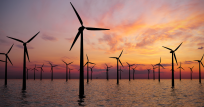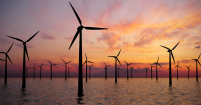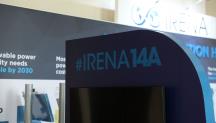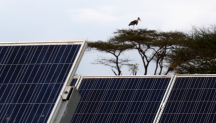

Offshore wind patents on the rise, new study by IRENA and EPO shows
Newsletter
The global renewable power capacity must triple by 2030 to keep the 1.5°C target of the Paris Agreement within reach. Offshore Wind capacity would need to reach almost 500 GW in 2030, a fourteen-fold increase in comparison to 2020.
Offshore technology’s high energy output and its ability to be built up quickly at gigawatt-scale makes offshore wind a valuable and cost-effective option to provide electricity to densely populated coastal areas.
Innovation is crucial to develop new foundations for turbines far off the coast or boost sector coupling. A joint study published today by the International Renewable Energy Agency (IRENA) and the European Patent Office (EPO) assesses patent statistics to reveal the most recent technological trends that have been taking place in the offshore wind industry. The Offshore Wind Energy Patent Insights Report shows that between 2002-2022 patent filings for offshore wind technologies have grown on average by 18%. This growth stagnated between 2014-2017 but, in recent years, has witnessed a sharp increase in filings.
The new report tracks the evolution of patent filings over the last 20 years and highlights several trends, including (but not limited to):
- The innovation in the offshore wind sector is largely driven by players in Europe and Asia, with the United States emerging as a future market. In the ranking of the top ten countries in filed International Patent Families (IPFs), seven countries are European, with Germany and Denmark in the lead. In non-IPF families, China is by far the leading country demonstrating their strong local offshore market.
- Along the offshore wind supply chain, the largest invention activity has taken place in floating foundations, logistical capacities, and the potential to support green hydrogen production. Most inventions for offshore wind focus on three areas: floating foundations, transportation equipment and the installation and erection of turbines.
- Offshore wind systems are increasingly exploring avenues to strengthen their energy storage and/or hydrogen production to balance power systems and create additional value. There is emphasis to promote flexibility in energy systems and the patent data reveals that growing interest to integrate energy storage options within offshore wind farms – especially those with hydrogen production capabilities to further accelerate decarbonization activities.
The international community is at an inflexion point with regards to the energy transition progress. Although patent filings for offshore wind technologies have shown a steep increase, the report underlines that major and sustained innovations along with a complementary regulatory framework will be required to increase global capacities to ensure its effective contribution in limiting global warming to 1.5°C.
The full IRENA-EPO joint publication is available here. Additionally, an online dashboard with interactive graphs can be accessed here.
IRENA has been driving the global agenda on offshore wind developing within the wider context of accelerating the global energy transition in pursuit of the 1.5°C climate goal. Find out more about IRENA’s work on offshore wind.




